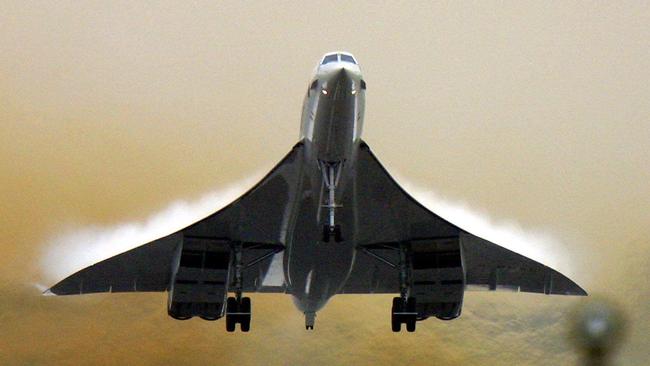Concorde: an aircraft too fast and too loud for a long life
It was nearly 50 years ago that a masterpiece of engineering and aerodynamic beauty, the Concorde, took to the air.

Nearly 50 years ago, a masterpiece of engineering and aerodynamic beauty took to the air. The birth of the Concorde — French airframe and British engines — promised an era of supersonic travel.
The dream soon faded, however, because of two unforeseen problems, and airlines cancelled their orders until only Air France and British Airways were left to hold six each of these technological marvels that subsequently turned out to be monuments of inefficiency.
The Concorde, travelling at twice the speed of sound (Mach 2) at about 60,000 feet, could carry more than 100 passengers from London to New York in 3½ hours, burning 90,000 litres of fuel.
Compare that with a B747 carrying 400 passengers on the same route in 7½ hours but burning only 60,000 litres.
This made it a prestige ride for the well-heeled only as ticket prices were set very high for the airlines to break even.
At M2.0, the ram temperature rise (skin friction) is 125C, so with an outside air temperature at 60,000 feet of about minus 60C this means the skin temperature of the Concorde in cruise was about 65C. Thus, to cruise faster than M2.0 brings into consideration a thermal limit.
Then came the oil crisis of 1973, which caused fuel prices to skyrocket, such that they exceeded pilots’ salaries as the major cost. Concordes were operating at a considerable loss.
The problem of supersonic flight brings into play a third drag in the aerodynamic equation.
Subsonic aircraft have profile drag (because of their shape) plus induced drag (because of the wings’ creation of lift). These are balanced by the thrust from the engines and the fuel flow is proportional to thrust.
Transonic aircraft that cruise about M0.86, such as the A380 and B777, have supercritical wing airfoil shapes that allow the airflow over the upper surface of the wing to be supersonic with a small mach drag rise as well as the profile drag and induced drag.
One often could see, as a passenger, the small mach shockwave visible on the top of a B747 wing in cruise.
Once mach critical drag rise (about M0.94) is reached, the mach shockwave drag increases enormously. Then to actually punch through the sound barrier and cruise supersonically, fuel is used at a very high rate, increasing with the rise in mach number because of the very high engine thrust required.
To add to the situation, Federal Aviation Administration law prohibits supersonic flight over land because of the sonic boom, so Concorde could operate only over water.
Then, in 2000, came the tragic Concorde crash during takeoff at Paris that resulted in a one-year return to service after fuel tank modification. By then British Airways and Air France were looking for an excuse to end the uneconomic Concorde operations.
An era had ended and it appears decades will pass before the possibility of supersonic passenger airliners again comes to fruition. The technological challenges of sonic boom of large aircraft and the huge fuel requirements may mean we have to wait for exo-atmospheric, low-orbit aircraft using hybrid scramjet/rocket engines. In the meantime, a supersonic business jet may make it into production within the next 10 years.
Research by NASA has reduced the sonic boom footprint by small aircraft to acceptable levels if the speed is kept below M1.5.
This means a medium-sized supersonic business jet, which would cost more than twice the purchase price of today’s super-large bizjets and with about four times the operating cost, would be a viable proposition for some corporations and billionaires that already operate large private jets.
Byron Bailey is a former RAAF fighter pilot who flew Boeing 777s as an airline captain.



To join the conversation, please log in. Don't have an account? Register
Join the conversation, you are commenting as Logout